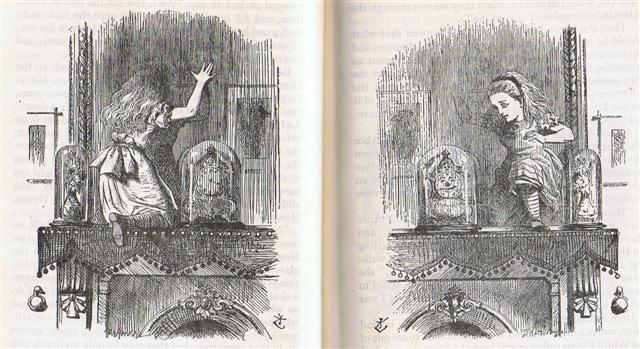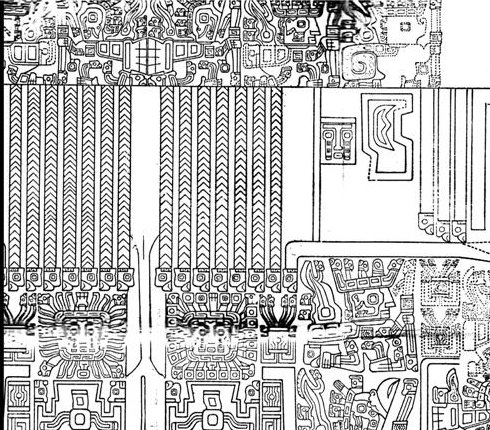11-7. I guess Metoro said iha instead of hia (count!) in order to make us realize that glyph 400 indicated a kind of reversal: ... The Sacred Book of the ancient Maya Quiche, the famous Popol Vuh (the Book of Counsel) tells of Zipacna, son of Vucub-Caquix (= Seven Arata). He sees 400 youths dragging a huge log that they want as a ridgepole for their house. Zipacna alone carries the tree without effort to the spot where a hole has been dug for the post to support the ridgepole. The youths, jealous and afraid, try to kill Zipacna by crushing him in the hole, but he escapes and brings down the house on their heads. They are removed to the sky, in a 'group', and the Pleiades are called after them ...
As a confirmation Metoro then said henua kiore as if in a looking glass mirror image of kiore henua.
We have counted to 396 + some fractions = 400 in the tresses on the back side of Mother Earth (the Earth-mother, Pacha-mama).
The curious reversed reading of Metoro did not die with the first 2 lines on side b of the tablet: ... For some reasons Metoro read the lines on side b backwards, starting with Eb1-36, -35, 34 ... and ending this line with Eb1-3, -2, -1. Though Eb1-37 -- -42 were left until after having read the mentioned glyphs and Eb2-27, -26, -25 ... -3, -2, -1 (in that order). Then he finished line Eb1 in the (presumably) right order: Eb1-37 -- -42. The close correlations between what Metoro was saying and the glyphs makes it absolutely clear that this is what happened. I have presumed that Metoro was wrong in reading backwards like that and therefore I present glyphs and Metoro's readings adjusted after the order of the glyphs, not according to the order of his reading ...
Eb1-36 surely ought to allude to day 136 (May 16) and Eb2-27 to the place a quarter later (136 + 91 = 227). Probably the reversal at glyph 400 served as a 'strange attractor', drawing the attention of Bishop Jaussen to this place in the text. The normal order then returned at the solstice:
... This island was once a great land. The reason it became so small is because Uoke lifted the earth with a (mighty) pole and then let it sink (into the sea). It was because of the very bad people of Te Pito O Te Henua that Uoke lifted the land (and let it crumble) until it became very small. From the uplifted Te Pito O Te Henua, (they) came to the landing site of Nga Tavake, to Te Ohiro. In Rotomea (near Mataveri) they disembarked and climbed up to stay at Vai Marama (a waterplace near Mataveri). During the next month, they moved on to Te Vare (on the slope of the crater Rano Kau). When they saw that the (land-) lifting Uoke also approached (their present) island, Nga Tavake spoke to Te Ohiro: 'The land is sinking into the sea and we are lost!' But Te Ohiro warded off the danger with a magic chant. In Puku Puhipuhi, Uoke's pole broke, and, in this way, at least Nga Tavake's landing site remained (of the formerly great land) ...
|
||||||||||||||||||||||||||||||||||||||||||||||||||||||||||||||||||||||||||||||||||||||||||||||||||||||||||







.jpg)